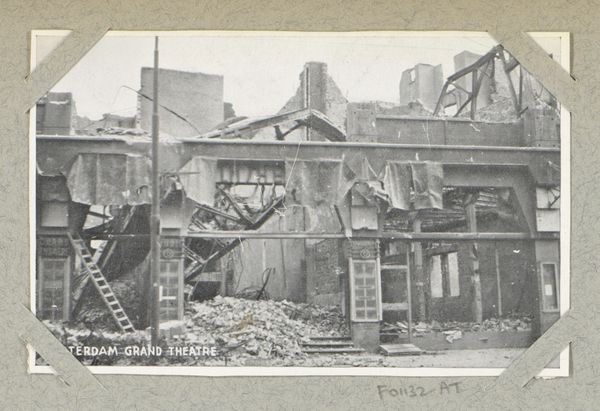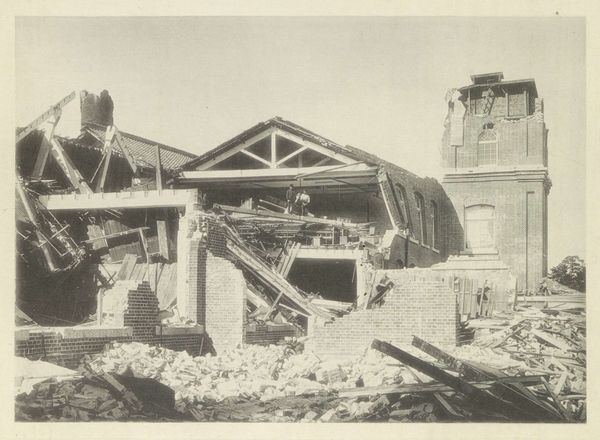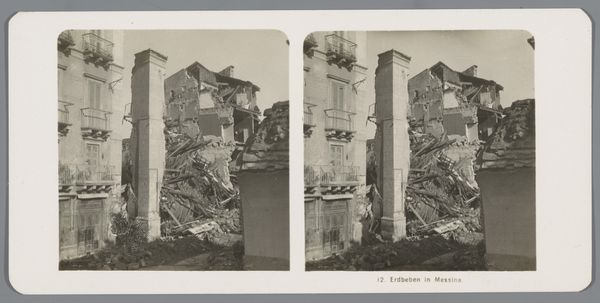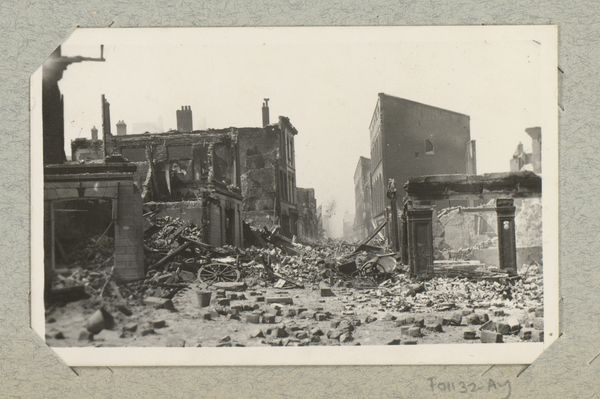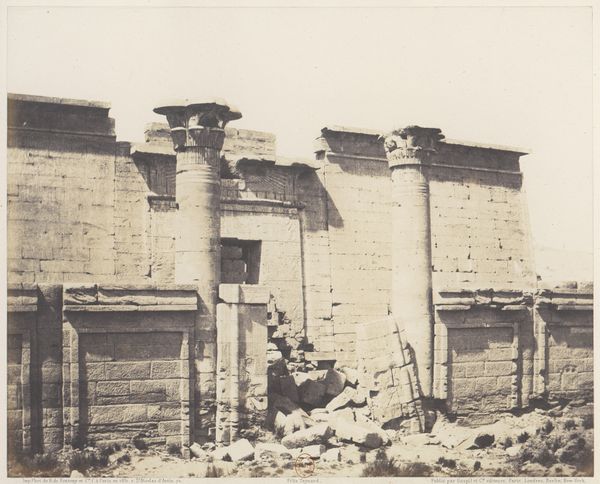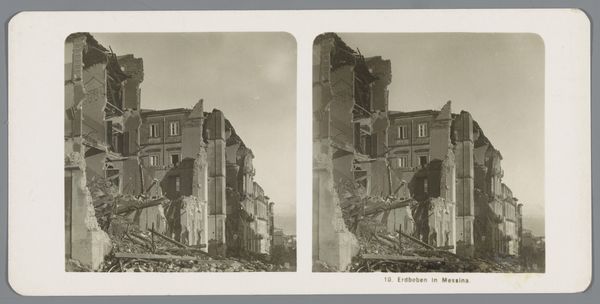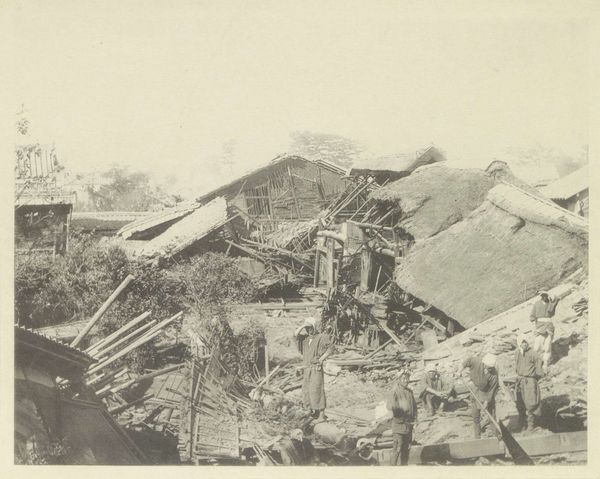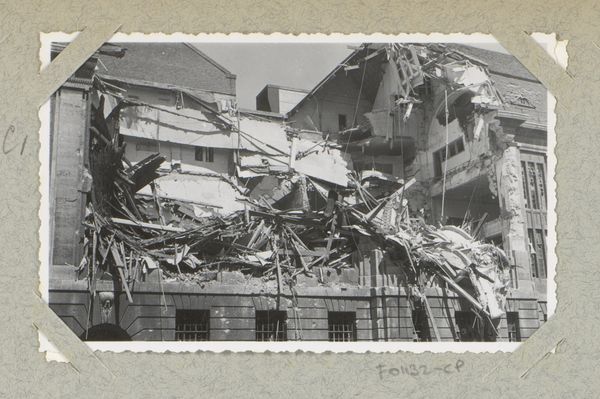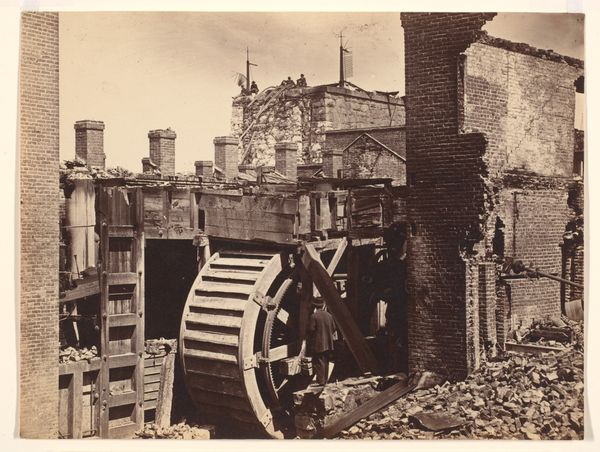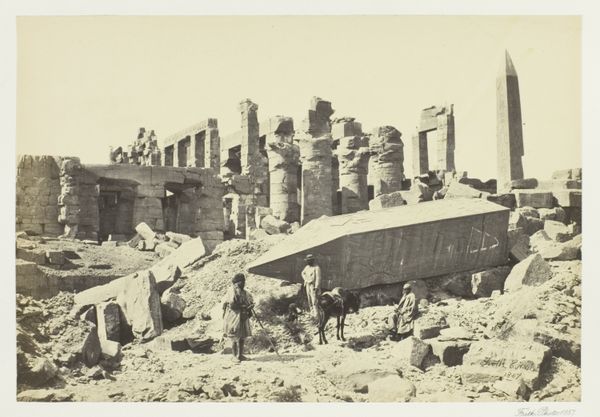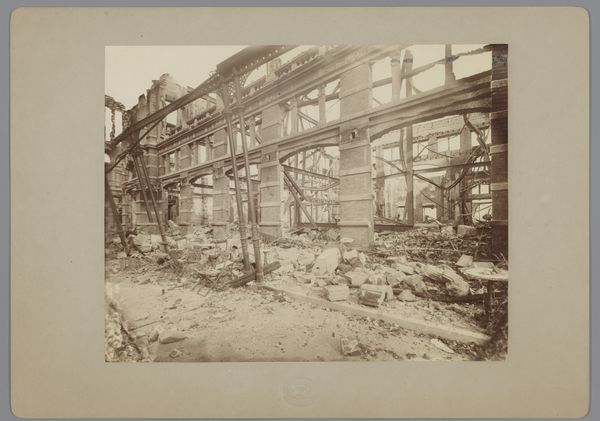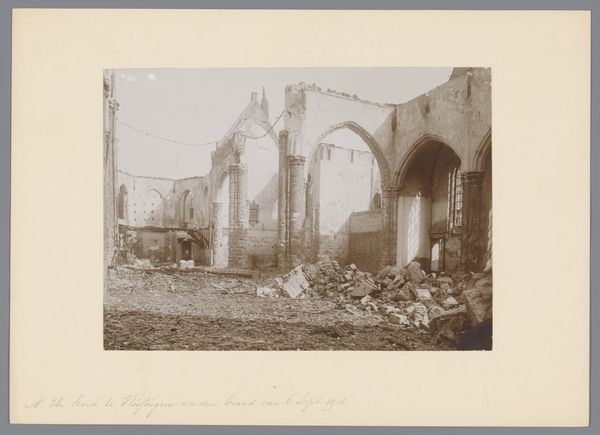
Gezicht op het verwoeste huis van president Thiers in Parijs door de Commune van Parijs before 1875
0:00
0:00
Dimensions: height 108 mm, width 165 mm
Copyright: Rijks Museum: Open Domain
Editor: This gelatin-silver print, "Gezicht op het verwoeste huis van president Thiers in Parijs door de Commune van Parijs," made before 1875, depicts exactly what the title suggests. I find the scene both stark and profoundly unsettling. What stands out to you when you look at this image? Curator: The photographic image immediately brings to mind the turbulent socio-political climate of post-Commune Paris. This isn't simply a depiction of physical ruin; it's a visual testament to the deep-seated class struggles and political vengeance that characterized the era. We see the physical manifestation of a shattered political order, but more subtly, how photographic media participates in the circulation of such images. How do you think such images were received at the time? Editor: I imagine different people received them very differently! Some might see justice served, others a horrifying act of barbarism. It's chilling to consider the power of photography to fuel such opposing views. Curator: Exactly. And it's crucial to consider who controlled the distribution and interpretation of these images. Did these photographs serve as warnings or justifications for further actions by the government against the Communards? Who was the intended audience? These are the kinds of questions that historians grapple with when examining such loaded imagery. How do you see the role of institutions like the Rijksmuseum impacting how we interpret such imagery? Editor: I suppose museums, by exhibiting pieces like this, give them a sense of historical significance, even legitimizing certain narratives around these events while potentially silencing others. It’s almost like the museum becomes another player in that socio-political landscape you mentioned. Curator: Precisely. Recognizing that museums themselves are not neutral spaces, but active participants in shaping historical narratives is fundamental. This image serves not only as a record of a past event, but also prompts critical reflection on the ways we remember and understand historical trauma. Editor: I hadn't considered the museum's role so explicitly before. Now I realize this photograph is doing a lot more than just showing a ruined building. It’s actively participating in history.
Comments
No comments
Be the first to comment and join the conversation on the ultimate creative platform.
